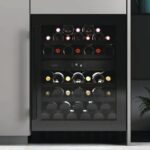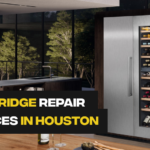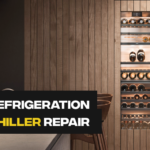Viking Wine Cooler Faulty Thermostat
Post Date: June 20, 2024

Viking wine coolers are renowned for their exceptional quality and ability to preserve wine at its optimal temperature. However, even the most sophisticated appliances can encounter issues, and a faulty thermostat is a common problem that can disrupt your wine’s delicate balance. This comprehensive guide will delve into the causes of a faulty thermostat in your Viking wine cooler, provide DIY solutions to address the problem, and outline preventive measures to safeguard your appliance’s health.
Causes of a Faulty Thermostat
A faulty thermostat can manifest in various ways, from the wine cooler failing to maintain the desired temperature to erratic cooling cycles. Several factors can contribute to a malfunctioning thermostat:
-
Normal Wear and Tear: Over time, thermostats can naturally wear out and become less accurate in sensing temperature fluctuations.
-
Physical Damage: Accidental bumps, jostling, or power surges can damage the thermostat’s internal components, disrupting its ability to function correctly.
-
Environmental Factors: Extreme temperatures, humidity, or exposure to dust and debris can also affect the thermostat’s sensitivity.
-
Defective Components: In rare instances, a thermostat may be manufactured with faulty components, leading to premature failure.
DIY Solutions for a Faulty Thermostat: A Hands-on Approach
Before resorting to professional help, there are several DIY solutions you can explore to diagnose and potentially fix a faulty thermostat in your Viking wine cooler. These solutions aim to address common issues that might be hindering the thermostat’s ability to regulate temperature effectively.
1. Power Up and Verify:
The first step is to ensure the most basic but often overlooked culprit isn’t the problem: a power supply issue. Begin by checking if the wine cooler is securely plugged into a functioning outlet. Sometimes, a loose connection or a tripped circuit breaker can disrupt the power flow entirely. Visually inspect the plug for any damage to the cord or prongs. If you have other appliances plugged into the same outlet, try moving them to a different circuit to see if the wine cooler receives power when plugged in solo. This helps isolate whether the issue lies with the outlet itself.
2. Reset, Restart, and Reassess:
Modern appliances often come with built-in reset mechanisms. Locate your Viking wine cooler’s thermostat and consult the user manual for specific instructions. A simple reset can sometimes nudge the thermostat back on track, refreshing its internal settings and prompting it to resume its temperature regulation duties. After resetting, observe the wine cooler for a period of time. Does the cooling cycle kick in as expected? Does the internal temperature start to decrease towards the desired setting? If not, move on to the next troubleshooting step.
3. Delicate Dust Removal:
Over time, dust and debris can accumulate on the thermostat’s sensors, hindering their ability to accurately sense the temperature within the wine cooler. These sensors are usually small, exposed components located near the thermostat itself. To address this, grab a soft-bristled brush or a cotton swab. Gently clean the sensor area, removing any visible dust or cobwebs. Be meticulous but avoid applying excessive pressure, as these sensors can be delicate. Once cleaned, observe the wine cooler’s performance. Does the temperature reading on the thermostat seem more accurate?
4. Calibrate for Optimal Performance:
Some Viking wine cooler models offer a calibration function for the thermostat. Consult your user manual for specific instructions on how to access and utilize this feature. Calibration essentially fine-tunes the thermostat’s internal settings to ensure it aligns with the actual temperature within the wine cooler. Think of it as a way to re-establish a precise communication channel between the sensor readings and the cooling system. If calibration is an option for your model, carefully follow the user manual’s steps and observe if the wine cooler maintains the desired temperature more consistently afterwards.
5. Testing with a Multimeter (For the Adventurous DIYer):
If the simpler solutions haven’t yielded results, and you’re comfortable with a bit more technical troubleshooting, you can attempt to test the thermostat’s continuity using a multimeter. This process involves checking if the electrical circuit within the thermostat is functioning properly. However, it’s crucial to emphasize caution. Using a multimeter requires a basic understanding of electrical components and safety precautions. If you’re unsure about this step, it’s best to consult a repair manual or seek guidance from an experienced electrician. They can provide safe and accurate testing procedures specific to your Viking wine cooler model.
By following these DIY solutions in a methodical manner, you can potentially identify and address the cause of a faulty thermostat in your Viking wine cooler. Remember, if you’re ever unsure about any step or feel uncomfortable proceeding, don’t hesitate to call a professional technician to ensure the safe and effective repair of your appliance.
Preventive Measures to Safeguard Your Thermostat
To minimize the risk of thermostat issues, follow these preventive measures:
-
Maintain Stable Environment: Install the wine cooler in a location with consistent temperature and humidity levels, avoiding direct sunlight or extreme heat sources.
-
Regular Cleaning: Regularly clean the wine cooler’s interior and exterior, including the thermostat area, to prevent dust and debris buildup.
-
Avoid Overloading: Avoid overloading the wine cooler, as this can strain the cooling system and potentially affect thermostat performance.
-
Surge Protection: Use a surge protector to safeguard the wine cooler from power surges that could damage electrical components.
-
Professional Maintenance: Schedule regular professional maintenance checkups to ensure the wine cooler is operating optimally and identify potential issues early on.
A faulty thermostat in your Viking wine cooler can disrupt the delicate balance of your wine’s preservation. By understanding the causes, implementing DIY solutions, and following preventive measures, you can effectively address thermostat issues and maintain your wine cooler in top condition, ensuring your prized wine collection remains perfectly preserved.








